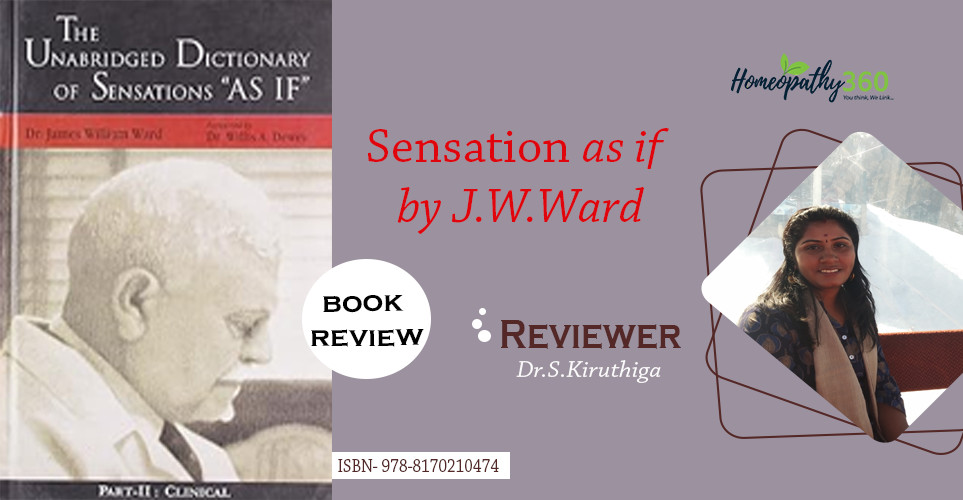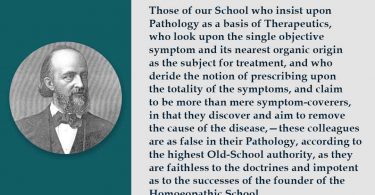
Title: Unabridged Dictionary of the Sensation “as if”
Author: James William Ward, AM, MD, FACS
President, American Institute of Homoeopathy,
President, Health advisory board, sanfrancisco dept.of public health.
Foreword: Willis A.Dewey
Introduction/Philosophy:
This volume contains a vast amount of pathogenetic and clinical symptomatic information of Materia Medica gathered and compiled.
During drug proving, various proverbs presented a special vocabulary to express the action of remedies. The symptoms expressed by the proverbs in subjective mood are preserved in this book and are generally expressed by the phrase “As if”, “as though”.
Sources: 137 references.
- Through painstaking research all the symptoms that are collected from all homoeopathic literature beginning with the days of Hahnemann.
- Authoritative provings
- Writings, journals
- Lectures of various esteemed authors
- Second volume of the book was written on the basis of Hering guiding symptoms.
Construction:
2 volumes, 3 parts.
Volume 1 – pathogenetic part 1(Allen Encyclopedia)
Volume 2 – Clinical part 2 (hering guiding symptoms), part 3 – include author’s name and sources.
- No chapters, No anatomical schema
- Rubrics/sensations are arranged alphabetically – verb, adverb or noun in the sentence is the leading for caption.
- Every caption contains 2-3 words, followed by symptoms, name of drug and name of author. Ex- Bridge vertigo, a very transient attack of vertigo while crossing bridge – Nat.mur (H)
- Caption is given in bold, symptom is given in ordinary roman, Drug – in italics, Author – parenthesis abbreviation. Ex – (H): Hahnemann; Hg – Hughes.
- Generally a single remedy is found in each sensation. Group of remedies covering a single sensation is given in alphabetical order.
- Cross references are numerous throughout the book in both editions.
- Original words of the author are retained even if there is grammatical error. Ex- curare appendix is retained as used by T.F.Allen.
- Various pronunciations of remedies are retained. Sulphur as sulfur, Actea as actaea.
- A sensation can be found under many captions, even upto 5.
Ex: nails grey, dirty as if decayed, when cut scattering like powder and splitting into layers. This is found under – decayed nails; nails grey – dirty; powdered nails; splitting nails; scattering nails;
Adaptation: this book provides descriptive captions to correlate the salient words used by provers and the caption used in Materia medica. It is a directory of special symptoms of remedy.
Limitations:
- No anatomical schema is followed.
- Captions are not following a pattern such as first word, last word, key point etc. Words have been randomly used as a caption. It is difficult to identify/search for them.
- Few symptoms are repeatedly given with 5-6 captions.
- Not useful for regular/routine repertorisation.
- List of drugs are not given.
Inference/ comments:
No memory is so prodigious to retain all symptoms of homoeopathic Materia medica. Therefore this book can be used as a reference for comparative therapeutics. The authenticity of symptoms are confirmed by the footnote of the author’s name under every symptom which also enables further references.

Dr. S. Kiruthiga
University rankholder and passionate Homeopath with 15 years experience in the stream of Hahnemannian Homeopathy. Working as Assistant Professor in the department of Homoeopathic Materia Medica at Sivaraj Homeopathic Medical College & Research Institute, Salem,Tamilnadu. Interested in literary works related to homeopathy. Research paper writing, article publishing and compiling books.


